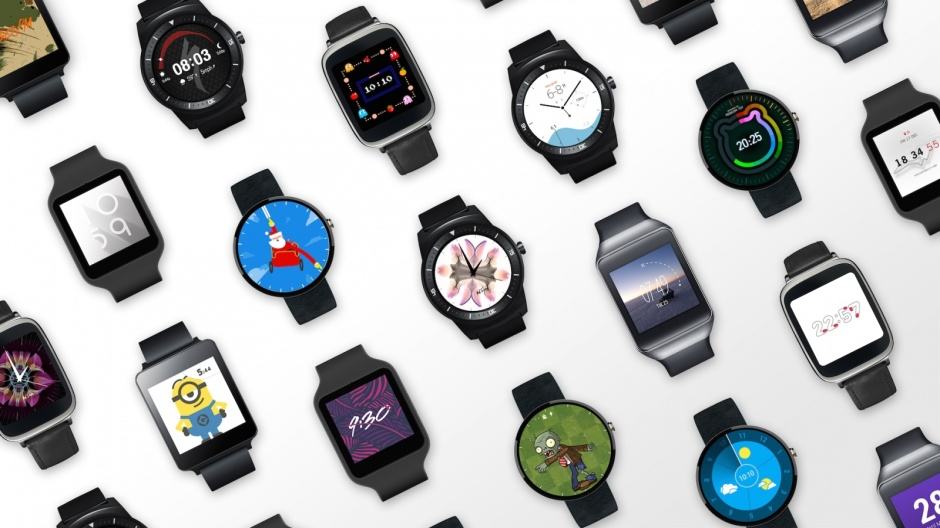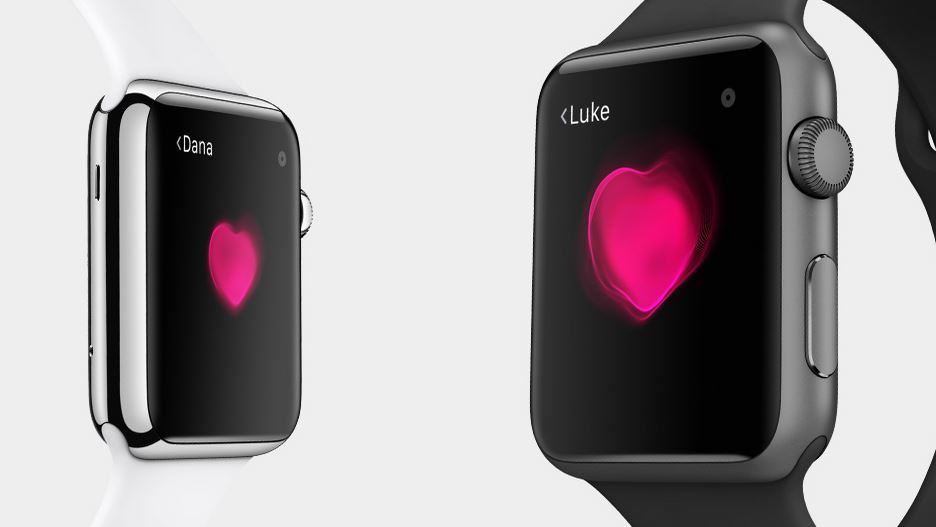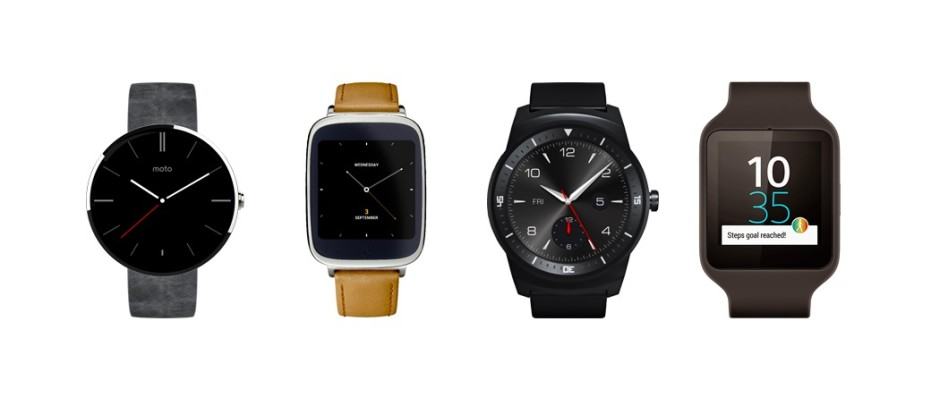How Android Wear stacks up against the Apple Watch

Android Wear vs. Apple Watch. Which is right for you? Photo: Google.
Now that we know more about the long-awaited Apple Watch, it’s time to find out how it stacks up against Google’s Android Wear platform and the growing number of wearables that support it.
There are lots of similarities between the two, but there also some big differences in software, hardware, and price that will likely help you decide which one is right for you.
Similarities
While the Apple Watch was expected to revolutionize the smartwatch market like the iPhone did for the smartphone, or the iPod did for portable music players, even the biggest Apple fans must agree that it’s not all that different to rival devices.
Both Apple Watch and Android Wear devices will track your fitness activities, then sync that data with either Health or Google Fit — or a third-party app. They can also act as remote controls for things like music playback and your smartphone’s camera shutter.
However, Apple Watch and Android Wear have some unique attributes.
Software
When it comes to fitness tracking, Apple Watch goes further than competing devices. It doesn’t just tell you how many steps you taken each day; it also sets you goals for movement, exercise, and standing — and it’ll remind you to get up if you’ve been sitting for too long.
When you’re in the gym or working out outdoors, you can tell Apple Watch which exercises you’re doing, and it will provide you with more detailed measurements for specific activities, such as rowing, cycling, and walking.

Apple Watch can track specific activities. Photo: Apple
Apple Watch also provides you with a summary of your progress every Monday, then sets you a new “daily move goal” to encourage you to do a little more than you did the week before.
Perhaps Apple Watch’s most significant health and fitness feature, however, is its integration with Apple’s new ResearchKit platform, which allows you to submit certain data to contribute to health research like never before.
Apple Watch also lets you take calls on your device itself — which the current crop of Android Wear watches cannot do — and it provides unique new ways to interact with friends and loved ones via Digital Touch.
Another important advantage is Apple Watch’s ability to connect to the iPhone over Wi-Fi, so if you leave your phone in another room and you wander out of Bluetooth range, you’ll still get your notifications so long as both devices are on the same Wi-Fi network.
But Android Wear has its advantages, too.

Some of the stunning watch faces available on Android Wear. Photo: Google
As you might expect, Android Wear is more open, so users can install and run apps on the watch itself — independent of a phone — whereas Apple Watch apps run on the iPhone and simply send a user interface to your wrist. Apple has said it will allow independent Watch apps, but for now, it doesn’t.
Android Wear users also seem to have more customization options. Apple didn’t mention the ability to download or purchase new watch faces during today’s event, so it seems you only have the pre-installed option to choose from — though they can be modified to some extent.
But with Android Wear, there are an ever-increasing number of third-party faces to download from Google Play. You can even download apps that’ll let you design your own faces from scratch, or apply others designed by the community.
Android Wear also has the option for an always-on watch face, so you don’t have to wait for the display to turn itself on when you want to check the time. This eats away at the battery more, of course, but with most devices, you’ll still get a day of normal use.
Perhaps the most significant difference between the Apple Watch and Android Wear devices, however, is the smartphone platforms they support. Apple Watch obviously supports the iPhone only, and while there are rumors of Android Wear support for iOS, it only works with Android for now.
If you have an iPhone and want to stick with an iPhone, then, Android Wear isn’t an option for now. Likewise, if you use Android, you might as well rule out the Apple Watch completely.

Digital Touch on Apple Watch. Photo: Apple
Battery Life
Tim Cook has promised “all-day battery life” for Apple Watch, which translates into up to 18 hours of use in between charges. That should be more than enough to get you through your average day — you just need to remember to charge it every night.
You can expect similar battery life from Android Wear devices. Some will provide up to two days of use in between charges — my Moto 360 does if I only use it lightly — but charging nightly is a must for most.
Apple Watch does have a trick up its sleeve, however; its Power Reserve mode will give you up to 72 hours of battery life, but the only thing the device does in Power Reserve is tell the time.
GPS
Without a GPS built-in, certain fitness tracking features — like recording your route — are only available on Apple Watch if you have your iPhone in your pocket as well. With Android Wear, however, you can find devices with an embedded GPS, such as the Sony SmartWatch 3.
Water Resistance
Apple has told us that the Apple Watch will withstand drops and splashes of water — such as light rain or perspiration — but it hasn’t advertised certified water resistance. Every Android Wear watch, on the other hand, is certified.
Not only will they withstand rain, then, but Android Wear watches can be worn while you wash your hands, take a shower, and even when you go for a dip in the pool.
Choice
In addition to more watch faces, Android Wear offers more hardware options. Consumers can buy devices from Motorola, Samsung, LG, Asus, and others — all with different designs made from different materials. That means it’s easier to find a smartwatch that suits you.
Whether you prefer round or square watch faces, or a device made out of plastic or metal, Android Wear has you covered.

Just some of the devices that run Android Wear.
With the Apple Watch, however, you’re getting the same design no matter which model you go for. You can pay more for the stainless steel and gold options, but their shape, size, and overall look will be identical to the entry-level Apple Watch Sport’s.
Price
Android Wear is also significantly cheaper than Apple Watch.
If you want Apple’s smartwatch, you’ll be paying at least $349 — that gets you the entry-level Apple Watch Sport with a 38mm face. If you want the 42mm face, the price increases to $399.
If you want the midrange Apple Watch, which is made of stainless steel and boasts the ability to swap straps, prices start at $549 for the 38mm model and $599 for the 42mm model with silicone straps. Add a stainless steel strap and you could be paying an extra $499.
As for that 18-karat gold Apple Watch Edition, that starts at just $10,000, but only limited numbers will be available, so you’ll need to get your pre-order in as soon as possible.

Your Apple Watch options. Photo: Apple
If you want the very best of Android Wear, you can expect to pay a lot less. High-end options like the Moto 360 can be had for as little as $229.99 on Amazon now, while the entry-level LG G Watch is under $200.


